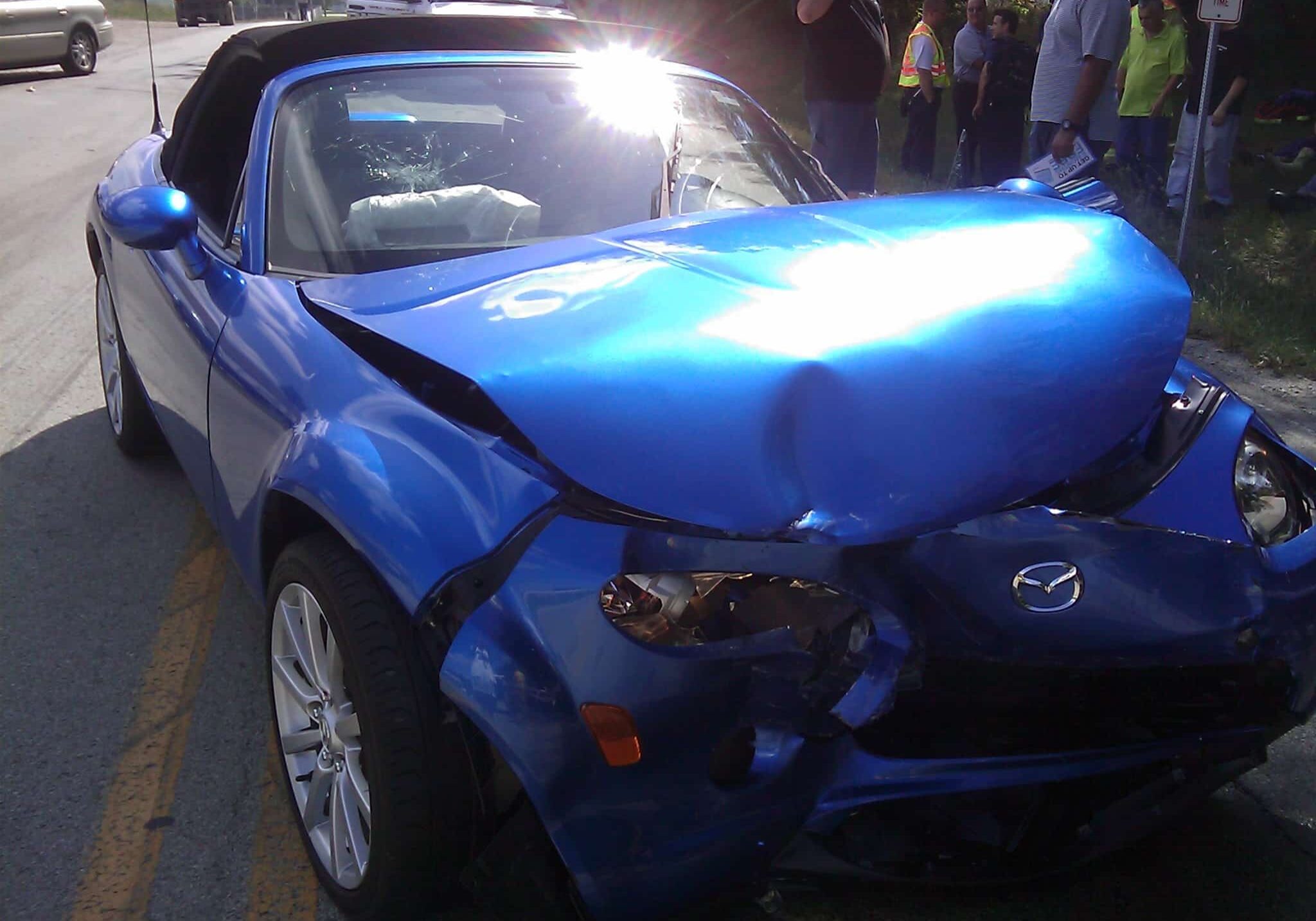
Every car accident is unique for those involved. Yet, experts group accidents into categories based on many factors, including the cause of the accident, the location, and the type of impact.
While impact might not seem important, collisions tend to follow predictable patterns. Learning these patterns can help you learn to avoid them and prevent accidents. Read on as our car accident lawyer explains five types of car crashes.
1. Rear-End Collisions
Rear-end collisions happen when the car in front stops or slows, but the car in the back does not.
Rear-end collisions are the most common type of crash. According to the National Safety Council (NSC), rear collisions accounted for nearly 50 percent of all crashes. They also caused nearly 50 percent of all crash injuries. Luckily, rear-end collisions cause less than twenty percent of all crash fatalities.
It’s easy for one car to rear-end another when it doesn’t have enough time or space to stop. So, following too closely – also known as tailgating – is a common cause of rear-end crashes.
Another factor is speeding. A driver travelling at high speeds will have a harder time slowing down to avoid hitting another vehicle.
Weather is another issue. Rain, ice, and other events can make roads slippery. Cars need more time to stop on slippery roads even at normal speeds.
To avoid rear-ending another car:
- Always leave a proper following distance between your car and the car in front of you.
- Increase following distance in poor weather.
- Check your side and rearview mirrors often.
- Make sure your brakes and brake lights are in working order.
- Obey the speed limit.
2. Sideswipe Accidents
Sideswipe collisions occur when the side of one car strikes the side of another car. While sideswipes compose about 20 percent of all crashes, they only cause roughly 10 percent of accident injuries and 7.8 percent of deaths.
Any lateral movement of a car – changing lanes, merging lanes, or drifting into another lane – creates a risk of a sideswipe.
To prevent a sideswipe:
- Always check your blind spot before changing lanes.
- Only change lanes when it is legal and safe to do so.
- Signal properly before changing lanes.
- Allow enough space for other drivers to merge safely.
- Do not speed up or slow down to prevent or hinder others from merging.
- Pay attention to the road to avoid drifting.
3. Side-Impact Collisions (T-Bone Accidents)
Unlike a sideswipe, where the sides of the cars hit one another, side-impact collisions occur when one car’s front hits another car’s side. (These are also called T-Bone, broadside, or right-angle collisions.) Side-impact crashes pose great danger because while they represent just 30 percent of all crashes, they account for 38 percent of crash injuries and 45 percent of crash fatalities.
Most T-bone accidents happen around intersections. They usually occur because one or both drivers ignored stop signs or traffic signals. Unlike other types of accidents, broadsides also happen in parking lots and driveways. If the car in traffic is not paying attention, it can easily hit a car entering traffic and vice versa.
To avoid an angle collision:
- Never run a red light or stop sign.
- Make a complete stop at every red light or stop sign.
- Never make an illegal left turn or U-turn.
- Stop completely at every stop sign and red light – no rolling stops.
- Look both ways before pulling out of a parking space or driveway.
4. Head-On Collisions
Head-on collisions happen when the front of one car hits the front of another.
Head-on collisions are the deadliest of all crashes. While they are just 3.5 percent of all crashes, head-on comprise 27.8 percent of fatal crashes. No other type of collision has this ratio of accidents to deaths.
Head-on collisions occur in many places, but because they involve cars travelling in opposite directions, the danger increases whenever cars do something that unexpectedly forces the car into the wrong lane. The usual causes are loss of control – such as speeding, failed brakes, or skidding – or driver error – such as crossing a median or passing improperly.
Here are some ways to prevent head-on collisions:
- NEVER go the wrong way on a one-way street.
- Obey all “Do Not Enter” and other such signs.
- Never cross a double-yellow line to pass.
- Never run a red light or stop sign.
- Only pass other vehicles on two lane roads with broken white lines when it is safe to do so.
- Do not speed around curves.
- Drive carefully in bad weather.
5. Single-Vehicle Accidents
Just 42 percent of car crashes involve other vehicles. The remainder happen when cars hit other objects. These can be moving objects like pedestrians and bikes or stationary items like trees and telephone poles. Whether the item is mobile or fixed, these crashes pose great risk to drivers and passengers.
Unlike the other types of car crashes, it’s difficult to find any one set of factors that cause single-car crashes. Drivers can cause these accidents in a variety of ways. Drivers who speed or drive recklessly increase the chances that they will lose control of the vehicle and hit something.
However, some factors are beyond a driver’s control. Poor weather can cause a car to hydroplane. Brake failures or tire blowouts can cause a car to spin out of control. Fallen tree branches, wild animals, and other obstacles can cause a driver to swerve.
Because single-car crashes can be caused in so many different ways, the best defense against them is to keep your car well maintained, drive safely for the weather conditions, and obey all road signs and traffic rules.
How to Prevent Any Type of Car Crash
While the different types of car crashes have different causes, there are two things that can prevent any type of accident.
First, never drive while distracted or sleepy. Distracted driving is a serious problem. At 55 miles per hour, looking down at your phone for just five seconds is the equivalent of driving the length of an entire football field – but with your eyes closed. Districted driving increases the risk of all types of car crashes.
Second, never drive while intoxicated. It’s not only illegal, it’s also dangerous. Drinking reduces focus, coordination, and inhibitions. Lowered inhibition causes drivers to take unnecessary risks – risks that can lead to a serious accident.
What to Do After a Car Accident in Birmingham, Alabama
No matter the type of accident, afterward, make sure to seek medical treatment, take pictures, and get the names of witnesses. Be careful when speaking to insurance companies.
If you need legal advice after any of these types of car crashes, contact Collins Law, LLC. We help clients facing car accident claims in Madison, Birmingham, and many other areas of Alabama. Call (205) 588-1411 to schedule a free consultation with our Alabama car accident attorneys.

